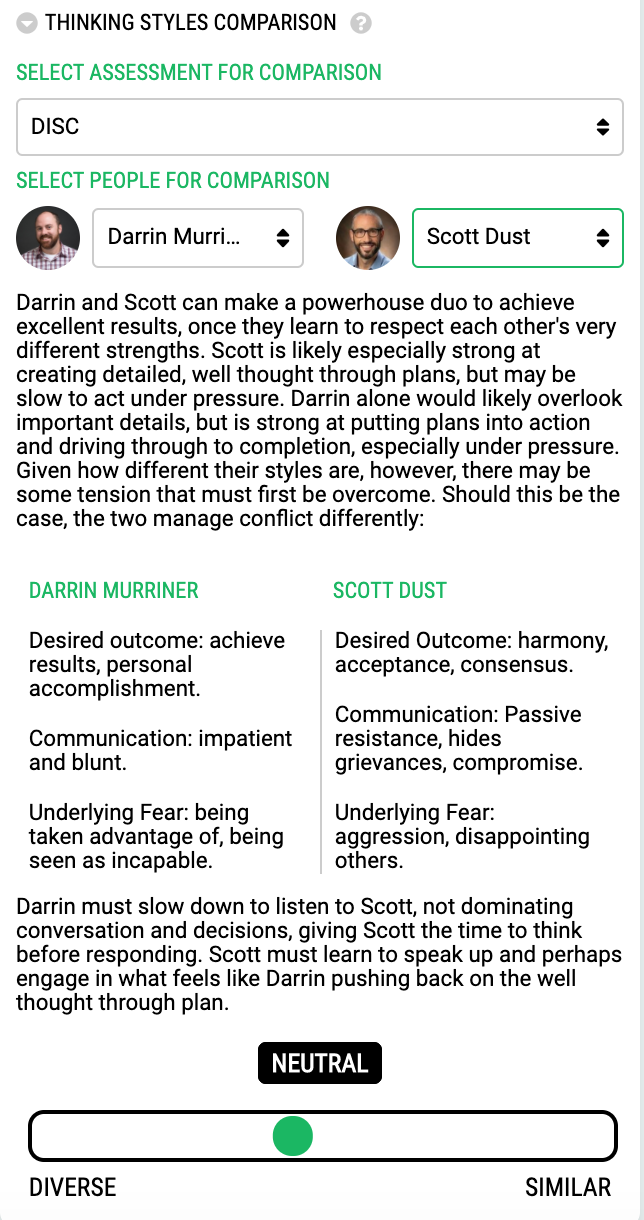In this blog post, Cloverleaf’s Chief Research Officer, Dr. Scott Dust, discusses cognitive diversity. He explains research findings from his published work in Personnel Psychology, offers key take-aways for maximizing cognitive diversity, and then explains how Cloverleaf can help facilitate the process of cognitive diversity.
In leadership and team building settings we’ve all been taught to embrace cognitive diversity. But how does cognitive diversity help? And how do we pinpoint and leverage cognitive diversity? My co-authors and I recently published a paper in Personnel Psychology that addresses these questions.
Across two studies, using a total of 520 manager-employee dyads, we found that manager-employee cognitive diversity improves employee creativity. As diverse teams become more divergent on risk orientation, employees’ intellectual stimulation increased, which in turn increased their creativity.
Risk orientation—the tendency to take or avoid risks when making decisions or problem-solving —is commonly thought to be a precursor to creativity. Importantly, it didn’t matter as much whether managers or employees were high or low on risk orientation. What did matter was that the manager and employee were different on risk orientation.
Also interesting is that employees’ perceptions of their managers determined whether the intellectual stimulation stemming from cognitive diversity was realized.
When employees’ perceived that their managers were genuinely interested in and open to their perspectives and ideas, the beneficial impact of cognitive diversity was enhanced. Alternatively, when employees’ perceived that their manager was uninterested in their perspectives and ideas, the benefits of cognitive diversity disappeared.
The take-aways of this research are three-fold:
(1) When two people work together that have a diversity of thought it facilitates intellectual stimulation, which entails rethinking assumptions and considering problems in new ways.
(2) When people experience intellectual stimulation it facilitates the generation of novel yet useful ideas and initiatives (i.e., creativity).
(3) The benefits of cognitive diversity in the work environment will only be realized when we perceive that the other party is genuinely open to our ideas and perspectives.
A key objective of the Cloverleaf platform is to enhance the likelihood that colleagues can capitalize on the benefits of cognitive diversity. To facilitate this process, we developed what is called the “Thinking Styles Comparison.”
On Cloverleaf’s team dashboard the user can select an assessment (e.g., DiSC, Instinctive Drives) and a team member comparison target. The user is then given a succinct report that helps them see how they can capitalize on their thinking style differences.
Cognitive diversity is important in work environments. At Cloverleaf, our goal is to help users make the most of these diverse viewpoints. Our hope is that this will lead to amazing teams that are not only more productive and make better decisions, but appreciate and respect each other’s different perspectives.
Liu, H., Dust, S. B., Xu, M., & Ji, Y. (forthcoming). Leader–follower risk orientation incongruence, intellectual stimulation, and creativity: A configurational approach. Personnel Psychology.





